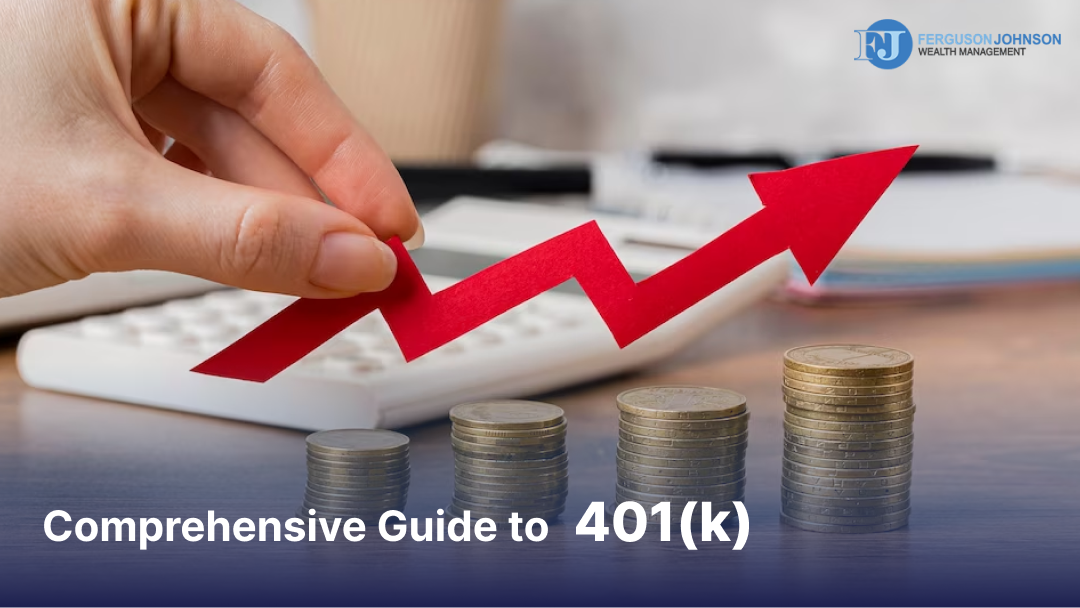
A 401(k) is an employer-provided retirement savings plan offering tax benefits to encourage long-term investment and savings for retirement. The plans are typically included in employee benefit packages.
One of the primary benefits of a 401(k) is the tax advantages offered. With a 401(k), your savings grow either tax-deferred in a traditional account or tax-free upon withdrawal in a Roth 401(k). This setup means that dividends and capital gains within the account are not taxed, allowing for more significant investment growth.
Another key benefit of the plans is employer contributions. Many employers provide a matching contribution, often up to between 3 percent and 6 percent of an employee’s salary. This match is essentially extra compensation, rewarding employees who are proactive about their retirement savings.
In a 401(k) retirement plan, employees contribute a portion of their income, often with the employer matching, and funds grow with tax advantages. Traditional 401(k) plans allow for pre-tax contributions, with taxes paid upon 401(k) withdrawals in retirement. Roth 401(k) plans involve after-tax contributions, but withdrawals are tax-free.
Eligibility for a 401(k) typically requires contributing a percentage of your income. Employers automatically deduct this amount from your paycheck and invest it in your chosen 401(k) plan. Your contributions are pre-tax with a traditional 401(k) or after-tax with a Roth 401(k), influencing your tax situation at the time of contribution and in retirement.
The IRS sets annual 401(k) contribution limits, which can change yearly based on inflation and other factors. For 2024, the limit is $23,000 with an additional “catch-up” contribution of $7,500 for those aged 50 and over.
Vesting in a 401(k) refers to the extent to which employer contributions are owned by the employee. While your contributions are immediately vested, employer contributions may follow a schedule, typically ranging from one to six years. The employee enrolled in the plan must remain with the company for that period to receive the funds.
To enroll in a 401(k) plan, employees often go through a simple process facilitated by their employer. This involves selecting a plan that aligns with their retirement goals and risk tolerance. The plans typically offer different investment options that are generally managed by financial services advisers.
A 401(k) rollover is a pivotal option when changing jobs or handling an IRA. There are various rollover choices, which include:
In handling an IRA during a 401(k) rollover, rolling over (converting) to a traditional IRA allows tax-deferred growth with no taxes due during the transfer. Taxes are paid only upon withdrawals. Additionally, there’s an option for a Roth conversion, where if eligible you can move all or part of your old 401(k) directly into a Roth IRA.
A Traditional 401(k) involves contributions deducted from your paycheck before income taxes, effectively reducing your current taxable income. Plans typically offer investment options, often in mutual funds, to allow savings to grow over time. Withdrawals during retirement are taxed as ordinary income. This plan is advantageous for people seeking immediate tax relief and expecting to be in a lower tax bracket during retirement.
Compared with the traditional 401(k), Roth 401(k) contributions are made with after-tax dollars, offering no immediate tax break. However, qualified distributions, such as those after age 59½ and five years since the first contribution, are tax-free. This plan is ideal for those anticipating higher tax rates in retirement, often making it attractive for young earners at lower income levels.
Designed for self-employed individuals without employees (except for a spouse), the solo 401(k) offers high contribution limits, up to $69,000 in 2024, plus a $7,500 catch-up for those over 50. It allows pre-tax contributions (traditional) or after-tax (Roth) with tax-free qualified distributions for the Roth option. A solo 401(k) is beneficial for maximizing retirement savings for business owners without full-time employees.
Mutual funds are a prevalent investment choice within 401(k) plans, offering a diversified mix of stocks, bonds, and other assets. These funds allow investors to pool their money together for managed investment, aligning with various investment strategies and risk profiles.
When managing a 401(k) retirement plan, the following are some common mistakes to avoid, to optimize your retirement savings:
For those seeking alternatives to 401(k) retirement savings, there are several options:
| Pros of a 401(k) Plan | Cons of a 401(k) Plan |
| You can automate contributions to a 401(k) annually, up to $23,000 in 2024, with an additional $7,500 for those 50 or older, increasing retirement savings. | Starting with smaller contributions because of other financial commitments such as loans and house purchases might hinder your ability to save enough over time. |
| Many employers match a portion of your contributions, adding free money to your account. For example, a 50% match up to 5% of a $60,000 salary results in an additional $1,500 from the employer. | Not all employers offer substantial matches. A smaller match, like 50% up to $500, may not significantly boost your retirement savings. |
| Investing in a 401(k) can be straightforward, with options like target-date funds that automatically adjust over time, simplifying retirement planning. | 401(k) plans may come with management and recordkeeping fees, which can be opaque and eat into investment returns. |
Use our guide of questions that are essential to ask an advisor before you hire them. Don’t make a mistake by working with the wrong financial advisor. Ask the right questions to determine if a financial advisor is right for you.
